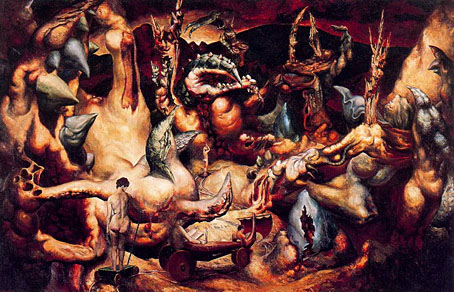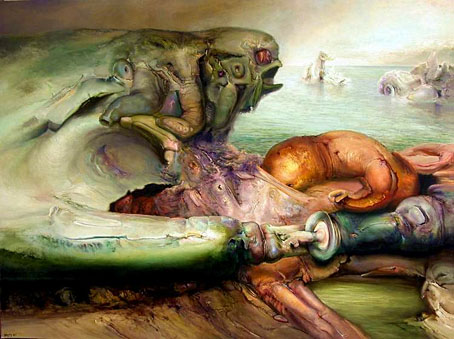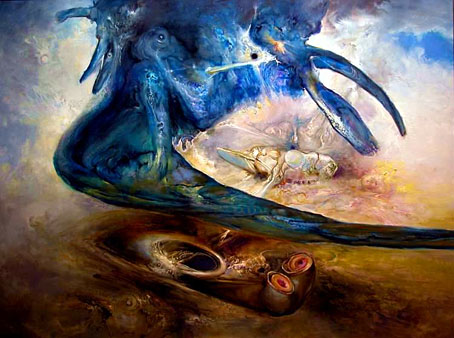
Funeral Procession in a Wounded Landscape (1945).
James Gleeson was an Australian Surrealist painter whose work I don’t think I’d seen before. The early pictures tend towards the post-Dalí school that crowds the second and third generation of Surrealist painting. More interesting for me are the later landscapes (if they can be labelled such) produced by a combination of collage and painting techniques. Some of HR Giger’s work in the 1970s explored similar organic terrain but this period didn’t last very long before he was into his biomechanical territory.

Locus Ganesa (1985).

Sky Techtonics (2002).
Elsewhere on { feuilleton }
• The fantastic art archive

The early pictures tend towards the post-Dalí school
Yes, some of it comes across as contrived and laboured, from someone who didn’t quite grasp the ‘spontaneity’ aspect of surrealism and was imitating Dali and Magritte and Picasso as if they were Academy teachers. It probably didn’t help that he liked to paint from magazine-photo poses rather than live models.
Robert Hughes reckoned that Gleeson’s version of surrealism was a very literary one, as if he was illustrating literary conceits.
Then his painting went dormant for decades when he moved into art reviewing, and the politics of the Australian art establishment. I enjoy his late-life return to painting considerably more. If you can obtain “Beyond the Screen of Sight” — the catalog from his 2005 retrospective at the NGA — there is some splendid stuff there.
Some of HR Giger’s work in the 1970s explored similar organic terrain
People have noted the more-than-coincidental resemblances.